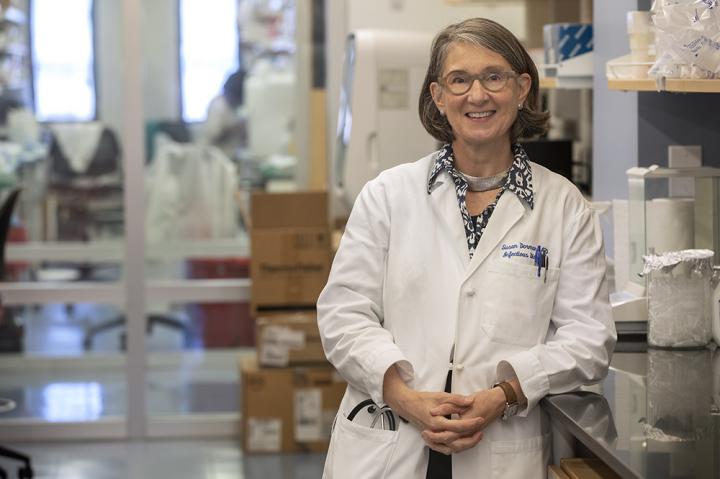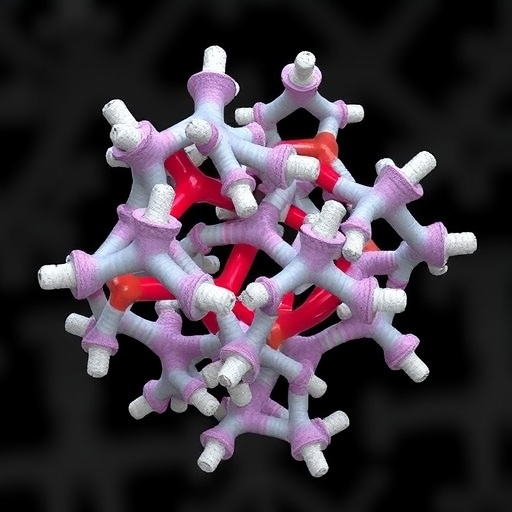Researchers at the Medical University of South Carolina and elsewhere find a new antibiotic regimen that shortens the treatment course for patients with tuberculosis
Tuberculosis (TB) is a deadly infection that occurs in every part of the world. The standard treatment for TB, a six-month multidrug regimen, has not changed in more than 40 years. Patients can find it difficult to complete the lengthy regimen, making it more likely that treatment resistance will develop.
A research team led by a Medical University of South Carolina (MUSC) investigator reports in the May 6 issue of the New England Journal of Medicine that a four-month treatment regimen using rifapentine is effective for treating TB. Shortening the treatment duration is an important step toward increased patient adherence.
In 2019 alone, 1.4 million people died from TB worldwide. TB is caused by a bacterial infection that attacks the lungs of those infected. The World Health Organization estimates that one-quarter of the world’s population has a TB infection, and those individuals will have a 5% to 10% lifetime risk of developing full TB disease. Individuals with compromised immune systems, such as people with HIV, have a much higher risk of developing TB.
“TB often affects adults in the prime of their lives,” said Susan Dorman, M.D., a professor in the College of Medicine at MUSC and first author of the study. “This disease and treatment can disrupt lives and pull families into poverty.”
While TB is curable and preventable, multidrug-resistant TB remains a top public health threat.
Resistance occurs when bacteria develop the ability to defeat drugs that are designed to kill them. When one bacterium in the colony figures out how to defeat a particular drug, it can quickly communicate out those instructions to neighboring bacteria, similar to sending out a group text message.
The current treatment for those with an active TB infection is a multidrug regimen over the course of six to nine months. Because different antibiotics use different mechanisms to defeat bacteria, TB is treated with several antibiotics at once to decrease the chances that the bacteria will become resistant to the drugs.
“Patient adherence to the taxing drug regimen has been a huge problem worldwide, and it is the main factor that has given rise to the very drug-resistant forms of TB that are much more toxic, expensive and time-consuming to treat,” said Dorman.
Reducing the length of time needed to treat tuberculosis has long been an important public health goal. The more patients who complete their treatments for TB, the less likely it is for bacteria to escape with knowledge to defeat a particular drug and continue the group message thread to other bacteria.
“Shortening the treatment time improves adherence, decreases costs to programs and decreases the burdens on patients themselves,” explained Dorman.
Dorman and her team at MUSC worked with both a Centers for Disease Control and Prevention (CDC) and a National Institutes of Health trials group to find a way to shorten the overall duration of treatment needed to cure the disease completely.
The team focused on a drug called rifapentine. This drug is similar to the antibiotic used in the current TB treatment protocol but remains effective in the body for longer periods of time. Over the course of 15 years, Dorman and her team performed preclinical and early phase clinical studies to determine how best to use this drug. They determined what dosage to give, how often the drug can be administered and what other antibiotics to pair with it. They then launched a worldwide phase III study with the TB Trials Consortium and the AIDS clinical trial group.
Patients with active TB infections were treated with one of two four-month rifapentine-based regimens or the standard six-month regimen. They were followed for 12 months. The results of the trial revealed that the four-month regimen containing rifapentine and another antibiotic, moxifloxacin, worked just as well as the six-month regimen. It was also safe and well-tolerated by the patients.
Dorman and her team hope these results will change how TB is currently being treated. In the U.S., their trial results will be submitted to the Food and Drug Administration (FDA). After the FDA reviews the data, the CDC will get involved and issue guidance on changing the treatment regimen. This process could take another 12 months to complete. In the meantime, Dorman and her team have been meeting with WHO representatives to develop guidelines for the new treatment.
“We’re hopeful that the WHO will adopt this regimen and recommend it worldwide,” said Dorman.
The results of this large phase III trial emphasize the importance of global participation and collaboration.
“Our intent was to enroll participants who reflected the overall world population of people with TB so that our results would be generalizable,” said Dorman.
They also made sure to include those under the age of 18, along with people who have HIV. People living with HIV are 18 times more likely to develop active TB compared with people without HIV. The combination of HIV and TB is particularly lethal because the HIV virus attacks the main immune cells that help to coordinate a defense against the tuberculosis bacteria. Importantly, patients with HIV cleared their TB just as well as those without HIV in this phase III study.
“This work really represents a landmark in tuberculosis care, and some of the scientific work embedded in this trial will help us and others to understand how to improve TB treatment even more,” said Dorman. “Four months is still too long.”
###
About the Medical University of South Carolina
Founded in 1824 in Charleston, the Medical University of South Carolina (MUSC) is home to the oldest medical school in the South as well as the state’s only integrated academic health sciences center, with a unique charge to serve the state through education, research and patient care. Each year, MUSC educates and trains more than 3,000 students and nearly 800 residents in six colleges: Dental Medicine, Graduate Studies, Health Professions, Medicine, Nursing and Pharmacy. MUSC brought in more than $271 million in biomedical research funds in fiscal year 2020, continuing to lead the state in obtaining National Institutes of Health funding, with more than $129.9 million. For information on academic programs, visit musc.edu.
As the clinical health system of the Medical University of South Carolina, MUSC Health is dedicated to delivering the highest quality patient care available while training generations of competent, compassionate health care providers to serve the people of South Carolina and beyond. Comprising some 1,600 beds, more than 100 outreach sites, the MUSC College of Medicine, the physicians’ practice plan and nearly 275 telehealth locations, MUSC Health owns and operates eight hospitals situated in Charleston, Chester, Florence, Lancaster and Marion counties. In 2020, for the sixth consecutive year, U.S. News & World Report named MUSC Health the No. 1 hospital in South Carolina. To learn more about clinical patient services, visit muschealth.org.
MUSC and its affiliates have collective annual budgets of $3.2 billion. The more than 17,000 MUSC team members include world-class faculty, physicians, specialty providers and scientists who deliver groundbreaking education, research, technology and patient care.
Media Contact
Heather Woolwine
[email protected]
Original Source
https:/
Related Journal Article
http://dx.





